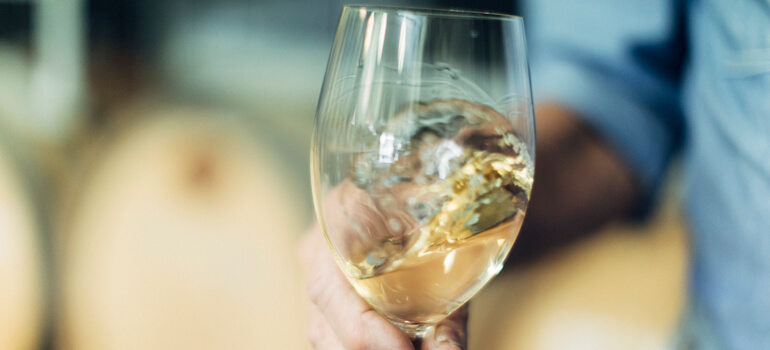A long-term study has concluded that there is little to be gained by adding pure glutathione before or during fermentation, with limited and at best subtle effects on finished wines.
The findings may disappoint winemakers keen to pursue pure glutathione as an alternative to sulfur dioxide, the antioxidant most commonly used to protect wine and preserve quality. It does, however, confirm that seeking approval for pure glutathione as a permitted winemaking additive is not worth pursuing*.
“Our work showed that low concentrations of glutathione have little impact when added prior to fermentation and that higher addition rates could actually cause undesirable sensory outcomes,” said co-chief investigator Dr Simon Schmidt from the Australian Wine Research Institute.
 Reduced glutathione is a naturally occurring grape-derived peptide and antioxidant that has been touted for its potential to augment the use of sulfur dioxide for the preservation of wine freshness and aroma intensity.
Reduced glutathione is a naturally occurring grape-derived peptide and antioxidant that has been touted for its potential to augment the use of sulfur dioxide for the preservation of wine freshness and aroma intensity.
“However, our studies demonstrated that glutathione addition before fermentation couldn’t substitute for, or augment, sulfur dioxide as an antioxidant.
“We found that glutathione use during fermentation did not alleviate the need for sulfur dioxide during bottling. Therefore, one of the main potential drivers for its uptake as an additive in winemaking was ruled out ,” Dr Schmidt said.
In the study, glutathione was added to juices and defined media together with increasing yeast assimilable nitrogen (YAN) concentrations. The glutathione concentration was monitored throughout fermentation to understand the impact of YAN on glutathione consumption. Yeast strains that varied in their nitrogen demand were also evaluated.
Although it was demonstrated that increasing the juice YAN status did decrease glutathione consumption during fermentation, the loss of glutathione could not be eliminated entirely.
“Even at a low initial glutathione concentration and high initial YAN concentrations, some consumption of glutathione was evident. However, when very low concentrations are added before fermentation, glutathione consumption does not lead to the evolution of reductive characters in wine.”

Dr Schmidt said the finding that surprised the research team most was that small additions of glutathione immediately after grape pressing were associated with increased concentrations of the varietal thiol 3-MH in the finished Chardonnay wine. This effect of glutathione on 3-MH concentration was yeast strain-dependent.
Dr Schmidt said that although these observations were surprising, and despite 3-MH being a potent aroma compound, it is unlikely that the size of the changes observed would have a material impact on wine style.
The compound 3-MH has been shown to contribute different characteristics depending on its concentration in wine. In Chardonnay, 3-MH can appear aromatically as passionfruit and tropical fruit or as sulfury and burnt.

Dr Schmidt, a Research Manager at the AWRI, collaborated on the four-year project with the University of Adelaide’s Dr David Jeffery and Dr Gabriel Perrone from University of Western Sydney.
The project’s Final Report is available here.
* Glutathione-enriched inactivated dry yeast is an approved processing aid for winemaking (OIV & FSANZ) but pure glutathione is not approved as a processing aid or as an additive.
